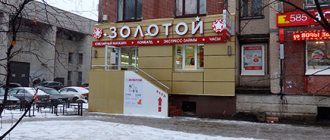What you need to know about the “Residential” status
Article 16 of the Housing Code of the Russian Federation classifies a residential building and its part, an apartment (or part of an apartment), and a room as residential premises. Article 15 gives a more detailed definition of “residential premises” - this is the name of a property that is isolated and suitable for permanent residence.
Such real estate must meet certain sanitary standards and legal requirements. In some cases, regulatory authorities may recognize that the premises are unfit for habitation.
In fact, the concept of living space is quite broad. Although an apartment is one of its varieties. The status of “residential premises” also includes residential buildings, rooms, parts of rooms, parts of houses.
Analysis of the concepts “Building”, “Structure”, “Structure”
Copied from the Legal System "Garant": https://www.garant.ru
Civilists who studied the concepts of buildings and structures as a special type of real estate noted that domestic civil legislation operates with the terms “structure” * (1), “construction”, “building” “structure” * (2). At the same time, the legislator did not formulate the corresponding definitions for a long time, limiting himself to indicating that buildings and structures belong to real estate *(3).
And although the doctrine has formed the main approaches to defining a building and structure, the basic features characterizing them are known; a generally accepted, consistent paradigm in this matter has not emerged. the Federal Law of December 30, 2009 N 384-FZ “Technical Regulations on the Safety of Buildings and Structures” did not change the situation.
At one time, based on the results of the analysis of the inherent characteristics of buildings and structures, I.D. Kuzmina proposed the following definition: “buildings and structures are engineering construction volumes, structures related to a special type of immovable things that have a strong and permanent connection with the land, which are the results of legally carried out construction activities accepted for operation” * (4).
There is a point of view that was supported, in particular, by M.N. Surovtsev, on the need to introduce definitions of buildings and structures into the Civil Code of the Russian Federation * (5). To do this, it was proposed to use a definition borrowed from SNiP * (6), where a building is an above-ground or underground construction system intended for the stay or residence of people, performing various types of production processes, and a structure is an above-ground or underground construction system intended for carrying out production processes various types, storage of materials, etc.
Some authors refuse to give different definitions to a building and a structure. So, V.A. Ersh believes that “separation of buildings from structures is inappropriate from the point of view of civil law. The legal concept of a building and other structure * (7) cannot be given. From a legal point of view, buildings and other structures are defined through the category of real estate, and in a general sense - through the category of things defined by individual characteristics. Legally significant is the separation of buildings and other structures from structures that are not related to real estate”*(8).
We believe the approach outlined is incorrect for many reasons. If you do not have a clear idea about the object being studied and its specifics, about what legal relations arise about, then such an object will be impossible to distinguish from others, thus the research becomes pointless. Regarding the advisability of separating buildings from structures, we note that, for example, buildings may include residential premises, but structures may not, therefore, a different legal regime is established in relation to them. The list of differences can be continued (a structure can be located on hundreds of land plots, but a building can be located on only one, etc.).
V.V. Vitryansky lists the following characteristics as defining a building: 1) artificiality of construction; 2) connection to a specific land plot; 3) impossibility of movement without damage; 4) independence; 5) completeness*(9).
Currently, the legal definition of a building and structure is enshrined in the Technical Regulations.
According to sub. 6 paragraph 2 art. 2 of the Technical Regulations, a building is a result of construction, which is a volumetric building system with above-ground and (or) underground parts, including premises, engineering support networks and engineering support systems and intended for living and (or) activities of people , location of production, storage of products or keeping animals.
Since the legal definitions contained in the Technical Regulations are of great theoretical and practical importance as general categories, we believe it is necessary to analyze these definitions in detail and compare them with the norms of German law, which will allow us to clarify the definitions of the concepts of buildings and structures.
The technical regulations in the above definition establish the following characteristics of a building: 1) the building is the result of construction; 2) the building has a volumetric construction system; 3) the building includes premises, engineering support networks and engineering support systems; 4) the building has a special purpose; 5) buildings, like structures, are capital objects. Let's look at each one separately.
1. The building is the result of construction. In accordance with the Town Planning Code (GrK) of the Russian Federation (clause 13 of article 1), construction means the creation of buildings, structures, structures that are objects of capital construction (clause 10 of article 1). In other words, construction includes the creation of only capital facilities * (10).
If we think sequentially, the creation of kiosks, sheds and other similar structures is not construction. Consequently, regardless of other characteristics of a temporary building (even if it has all the other features inherent in a building, including a strong connection with the ground *(11)), it cannot be recognized as a building *(12) (by the way, the same can be said about the construction). The question arises: can a temporary structure be recognized as real estate? Russian legislation does not give a clear answer.
On the one hand, temporary buildings can have a strong connection with the land and, on this basis, be classified as real estate. They often exist for many years; it is no coincidence that the saying “there is nothing more permanent than temporary” arose. Some scientists even believe that a connection with land is a sufficient basis for recognizing such objects as real estate *(13).
On the other hand, extending the real estate regime to temporary buildings does not meet the criterion of high economic and social value and seems inappropriate. As noted by I.D. Kuzmina, “the validity of recognizing objects built for a time as real estate seems doubtful due to the lack of signs of a strong connection with the land, permanence, perpetuity, and intended to satisfy a permanent, and not just temporary, economic purpose. Regardless of the presence of a foundation, they do not have the properties of immovability due to programmed demolition or transfer” * (14). Let us note that the above statement is subject to fair criticism by civilists * (15).
In the law of continental Europe, the issue of the nature of temporary structures is, as a rule, settled. For example, German legislation does not classify temporary buildings as real estate (§ 95 of the German Civil Code), while the Italian legislator has chosen the opposite position (Article 812 of the Italian Civil Code).
Russian legislation does not contain such a direct rule, but judicial practice denies the possibility of recognizing temporary buildings as real estate.
In a situation where temporary structures are characterized by signs of lightweight prefabricated structures and do not have a foundation, the reasoning of the courts is quite justified, since these signs indicate the absence of a strong connection between the objects and the ground and the possibility of their movement without compromising their purpose. Thus, the FAS Moscow District, in resolution dated February 13, 2008 N KG-A41/159-08, on this basis classifies trade pavilions as temporary buildings and refuses to recognize them as real estate.
But if temporary structures are erected on a permanent foundation and have a strong connection to the ground, the courts’ reasoning no longer looks so convincing. Thus, the Federal Antimonopoly Service of the Moscow District, in resolution dated July 5, 2006 N KG-A40/5041-06, notes that a shopping pavilion is not real estate, since it is a temporary structure erected on a land plot provided under a short-term lease. The court made this conclusion despite the conclusion of the State Unitary Enterprise Central Research Institute of Building Structures named after. V.A. Kucherenko , recognizing the disputed object as stationary (having an inextricable connection with the ground).
The Federal Antimonopoly Service of the North Caucasus District, in its resolution dated March 18, 2008 N F08-1203/08 , emphasizes that installing a kiosk on a permanent foundation does not entail classifying the kiosk itself as real estate; the construction of a monolithic foundation cannot be considered as evidence of the construction of a permanent building, since this kind of foundation is also used for the construction of temporary structures.
In other words, the courts, by denying the possibility of classifying a temporary structure (kiosk, pavilion, etc.) as real estate, essentially deny the sufficiency of the fundamental criterion of real estate - connection with the land, although in these cases it existed and was confirmed by expert means.
Article 130 of the Civil Code of the Russian Federation does not contain language prohibiting the recognition of temporary buildings as real estate; on the contrary, the law states that all objects firmly connected to the land, i.e. those that cannot be moved without disproportionate damage to their purpose are real estate. The specified norm does not talk about the lifetime of an object. The courts, denying the real estate properties of temporary buildings, make a logical assumption, replacing the concept of “strong connection with the land” with the concept of “lifetime of the object” * (16). This situation can be resolved by establishing the provision that temporary buildings are not real estate.
Let us note that the definition of the concept “building” contains a logical error: its essence is revealed by referring to capital construction objects (through the result of construction), but nothing more than a building is recognized as a capital construction object. We believe it is necessary to develop a clear and consistent definition of the concept of “building” (what has been said is also true in relation to the definition of the concept of “structure”, which will be discussed below).
2. The building has a volumetric construction system. The word “volume” in Russian means the size of something in length, height and width, measured in cubic units * (17). Note that based on this interpretation, we can conclude that all buildings as objects of the material world have length, width and height, and therefore, a three-dimensional building system. In accordance with the procedure for determining the construction volume of buildings described in clause 3.42 of the Instructions on accounting of housing stock in the Russian Federation (approved by order of the Ministry of Land Construction of Russia dated August 4, 1998 N 37) :
- the volume of the above-ground and underground parts of the building is established within the bounding surfaces with the inclusion of enclosing structures, skylights, etc., starting from the level of the finished floor of each part of the building, without taking into account protruding architectural details and structural elements, underground channels, porticoes, terraces, balconies , the volume of passages and space under the building on supports (clean), as well as ventilated underground areas under buildings erected on permafrost soils;
— the volume of a building with an attic floor is determined by multiplying its area, calculated from the dimensions of the external outline of the walls of the building above the base, by the height of the building. The height of the building is taken from the level of the finished floor of the first floor to the top of the attic floor backfill;
— the volume of a building without an attic floor is determined by multiplying the vertical cross-sectional area of the building by the length. The vertical sectional area of the building is determined by the contour of the outer surface of the walls, by the upper outline of the roof and by the level of the finished floor of the first floor, and the length of the building is determined by measuring the distance between the outer surfaces of the end walls at the level of the first floor above the base.
Thus, the building volume, like volume in general, is determined by multiplying the length, width and height of the object, measured along its external boundaries. The all-concrete base of the monument also has volume and is a three-dimensional building system.
We believe that the indication of volume was intended to emphasize that the building has internal usable space, i.e. internal volume. Perhaps, in the norm defining the concept of a building, it would be more correct to say that the latter is a building system that has an internal usable volume.
3. The building includes premises, utility networks and utility systems. Technical regulations in sub. 14 paragraph 2 art. 2 defines a room as a part of the volume of a building or structure that has a specific purpose and is limited by building structures. At the same time, Part 2, Clause 6, Art. 12 of the Federal Law of July 21, 1997 N 122-FZ “On state registration of rights to real estate and transactions with it” classifies premises as objects included in buildings and structures.
In paragraph 3.8.1 of Chapter 4 of the Concept for the development of civil legislation of the Russian Federation (approved by the Council under the President of the Russian Federation for the codification and improvement of civil legislation on November 7, 2009) it is said: “The premises as an object of civil rights should be understood as a structurally and spatially separate part (three-dimensional volume ) inside the building, suitable for use. Based on suitability, premises can be differentiated into residential and non-residential, main and auxiliary. The main premises can be an independent object of ownership, and auxiliary premises (which are only non-residential) can only be part of the common property” * (18).
It should be noted that the approach enshrined in the Technical Regulations does not correspond to the provisions of the said Concept: the latter deals with the internal, useful part of the building, and the Technical Regulations allow us to conclude that the premises include a general volume that has a certain purpose. Thus, with some degree of assumption, the following statement will be true: the interior partition is part of the total volume of the building, limited by building structures (load-bearing walls), and has a specific purpose (decorative), and therefore is a room. In addition, given that a structure can have a volumetric planar or linear building system (but the latter also have volume), the question arises: can part of the volume of such structures be recognized as a room?
In addition to the premises, the building includes engineering and technical support networks, i.e. (in accordance with subparagraph 20, paragraph 2, article 2 of the Technical Regulations) a set of pipelines, communications and other structures intended for engineering and technical support of buildings. In other words, the Technical Regulations give reason to believe that a building includes structures or that each structure recognized as a building includes a structure. At the same time, we note that in accordance with sub. 23 clause 2 art. 2 of the Technical Regulations, the structure is the result of construction, and therefore a capital object. Thus, there is a clear contradiction in the use of the term “structure” in the text of the Technical Regulations or in the understanding of the nature of the concept “structure”.
Note that the building also includes engineering and technical support systems. In accordance with sub. 21 clause 2 art. 2 of the Technical Regulations, the specified systems are building systems designed to perform the functions of water supply, sewerage, heating, ventilation, air conditioning, gas supply, electricity supply, communications, information technology, dispatching, waste disposal, vertical transport (elevators, escalators) or security functions.
In connection with the identification of these characteristics of a building, the question arises as to whether a poorly equipped structure such as a village house with a wooden frame, which has neither engineering communications nor engineering support, should be recognized as a building. Let us note that many village houses still lack all engineering and technical support systems (with the exception of electricity, but sometimes even that is not available). If such houses cannot be recognized as buildings, does that mean they are structures? But then they cannot be residential, since at present the Housing Code of the Russian Federation directly states that residential premises can exist in a building (house). A similar question arises in relation to warehouse complexes or warehouse buildings, garages.
4. The building has a special purpose: it serves for people’s residence and (or) their activities. In this case, the building can be simultaneously intended for both residence and human activity, production location, product storage, and keeping animals. The specified list is closed, and the location of production, storage of products, keeping animals, apparently, do not belong to the category of “human activities”, since they are not in the same semantic series.
5. Buildings, like structures, are capital objects (the result of construction), therefore, non-capital (temporary) buildings do not apply to them. Structures with a volumetric system, in accordance with subparagraph. 14 paragraph 2 art. 2 of the Technical Regulations, include premises.
In addition to the previously mentioned problems with determining the mode of premises, we note the following. We believe that the purpose of identifying such an object as a premises is to introduce into civil circulation a part of a building or structure (initially appearing in circulation as a single object). The legislation differentiates premises according to the purpose of use into residential and non-residential. Moreover the Housing Code of the Russian Federation indicates that the premises are also a residential building (individually defined building), i.e. The entire building as a whole is considered a residential premises. In connection with the allocation of premises as a separate object of law, a situation arises in which two objects of law essentially coincide, but have a different legal regime. We believe it is necessary to differentiate these concepts by supplementing the norms of housing legislation with an indication that the premises are part of the building.
In addition, since the premises may be part of a structure, it is necessary to clarify whether such premises can, in principle, be considered as residential. Currently, the Housing Code of the Russian Federation states that residential premises can exist in a building (house). But the legal regime of the structure, after a new property (premises) is allocated from it, is unclear.
Subclause 23, clause 2, art. 2 of the Technical Regulations indicates that a structure is a result of construction, which is a volumetric, planar or linear building system, having ground, above-ground and (or) underground parts, consisting of load-bearing, and in some cases, enclosing building structures and intended for the implementation of production processes of various types, storage of products, temporary stay of people, movement of people and goods.
The structure is determined by indicating the signs of the construction result, namely spatial and volumetric characteristics: 1) structures have not only a volumetric, but also a planar and linear construction system; 2) structures consist of load-bearing or enclosing structures. Let's take a closer look at them.
1. Structures have not only a volumetric, but also a planar and linear construction system. We believe that structures can exist in the form of various building systems in any combination. So, there is no doubt that the tunnel has an internal volume, and at the same time it can have a significant length (the linear nature of the building system). A similar situation arises with regard to bridges, etc. We believe that the indication of a planar building system is intended to resolve the issue with buildings containing one element - “covering the land plot”, i.e. parking areas, sports grounds. Let us note that judicial practice on this issue is contradictory. Courts in some cases recognize such objects as real estate *(19), in others they indicate that these objects are, in fact, improvements to a land plot *(20). However, the Technical Regulations introduce additional characteristics for the structure.
2. Structures consist of load-bearing or enclosing structures. Based on the above wording, a simple paving that does not have enclosing structures is not a structure, and therefore should not be recognized as real estate.
Enclosing structures are building structures (walls, ceilings, partitions, etc.) that form the outer shell of a building (structure), protecting it from the effects of heat, moisture, wind, etc., and also divide the building into separate rooms . Often they also serve as load-bearing structures. Load-bearing structures are elements that bear the main loads and provide strength, rigidity and stability of buildings and structures * (21).
The structure, like a building, has a purpose: it is used to carry out various types of production processes, store products, temporarily stay people, move people and goods. The production process is understood as the totality of all actions of people and means of production aimed at producing products * (22).
The analysis allows us to assert that legal definitions are extremely unsuccessful, since they contain many conceptual and technical shortcomings. The most significant among them is the lack of indication of the connection of the object with the land (GrK RF, however, indicates that a structure is a capital object, but the very concept of capital contains a logical circle).
At the same time, in German law, the definition of a structure includes an indication of the characteristics of an immovable object (connection with the land). In Germany, building regulations are established at the level of the federal states, but on the basis and in accordance with the model law developed at the federal level by the conference of construction ministers of the federal states ( ARGEBAU ). The laws of the lands reproduce the model law and differ from it only slightly.
Let us turn to the model construction law Musterbauordnung (hereinafter referred to as MBO) * (23), according to § 2 (“Concepts”) of which building structures are structures made of building materials and connected to the ground; a connection with the ground also exists if the structure stands motionless on the ground under the influence of its own gravity or has limited mobility on a stationary surface, or if the structure for its intended purpose should be used mainly as a stationary structure. Construction structures also include embankments and ditches; storage, parking and exhibition spaces; sports and playgrounds; places for camping and recreation; recreation and amusement parks; parking spaces for vehicles; scaffolding; auxiliary devices for statically recording the state of construction.
In clause 9 § 2 MBO, building materials are understood as: building substances, components and structures that are produced for long-term integration into building structures, made from building substances and structural components that are produced for connection to the ground.
Paragraph 2 § 2 MBO defines that buildings are covered construction structures for independent use, in which people can be located, and which are intended to protect people, animals and material property.
This law divides buildings into five classes: 1) free-standing buildings up to 7 m high and consisting of no more than two premises with a total area of no more than 400 square meters. m and detached agricultural or forestry buildings; 2) buildings up to 7 m high and consisting of no more than two premises with a total area of no more than 400 sq. m. m; 3) other buildings up to 7 m high; 4) buildings with a height of up to 13 m and a premises area of no more than 400 sq. m. m; 5) other buildings, including underground ones.
As we can see, in German law a building is recognized as a type of structure. The specific characteristics of the building are: 1) the presence of a roof; 2) independence; 3) specific purpose (finding people, protection).
Of the buildings as a general category, special structures are distinguished (high-rise buildings and structures, large-area buildings, buildings of schools, hospitals and other similar institutions, high-bay warehouses, etc.).
Buildings can be erected on a land plot only if the land plot is adjacent to a public road with an acceptable width side or the land plot has access to a public road. In several areas, a building is built only on the condition that it does not contradict building regulations (§ 4 MBO).
Thus, in German law, buildings can be located on two or more plots of land not only as a result of vertical division, but also be originally created on several plots of land.
I.P. Piskov is of the opinion that “the distinction between the concepts of buildings and structures as legal categories has an objective basis. Buildings can be located only on one plot of land, and structures can be located on several”*(24). Indeed, for the normal technical and economic operation of a building, a plot of land is required, the dimensions of which correspond to the structure itself, as well as the area around it. However, the scientist’s conclusion reflects the ideal state of affairs; in fact, the specified order is not observed. The building can initially be built on several land plots, it can also be erected beyond the boundaries of the land plot being used (development in violation of the boundaries of the neighboring plot) * (25), the building can be divided vertically along with the land plot.
The question of the distinction between buildings and structures arises, among other things, in connection with the use of the term “structure” by law. Various legal acts, in particular the Civil Code of the Russian Federation, place a structure as a type of capital object in one logical row with a structure, building and an object of unfinished construction.
Thus, Federal Law No. 66-FZ of April 15, 1998 “On gardening, gardening and dacha non-profit associations of citizens” separates the concepts of “residential building”, “residential building” (apparently, this means a building), economic structure and structure ( see article 11).
Federal Law No. 122-FZ of July 21, 1997 “On state registration of rights to real estate and transactions with it” uses mixed terminology: in Art. 25.5 (“Features of state registration of ownership and lease rights to a land plot occupied by a building, structure or structure, during state registration of the transfer of ownership of a building (structure), structure or other real estate”) refers to “building (structure), structure or other real estate,” and in paragraph 3 of Art. 13 - about “building, structure or structure.”
As we see, the legislator does not have a clear idea of the relationship between the concepts of “building”, “structure” and “structure”. All of the above terms, in accordance with the Civil Code of the Russian Federation, denote capital objects that are different in nature. Apparently, according to the logic of the Civil Code of the Russian Federation, the term “structure” includes capital objects that cannot be classified as buildings or structures. Thus, the use of the wording “building (structure)” is incorrect. We believe that, if you follow the approach of the Civil Code of the Russian Federation, buildings can include such capital objects as sheds, greenhouses, baths, sheds, greenhouses, summer kitchens, garages, etc.
The terminology used by the legislator is extremely unfortunate and requires improvement. The lack of development of the conceptual apparatus causes problems in practice. So, in paragraph 5 of Art. 1 of Federal Law No. 221-FZ of July 24, 2007 “On the State Real Estate Cadastre” states that cadastral registration is carried out in relation to land plots, buildings, structures, premises, and unfinished construction projects. That is, structures (as opposed to buildings and structures) that are capital objects (real estate) are not subject to cadastral registration. How can they be registered in the Unified State Register?
We believe that if the legislator wants to designate an artificially constructed object without indicating its characteristics as real estate, the term “structure” should be used, traditionally denoting the most general category. In Russian civil law, buildings and structures were usually designated by the term “structure”, while a structure was and is understood as a building that is firmly legally connected with a land plot *(26).
Based on the conducted research, we consider it possible to propose the following definitions.
Structure - any building made by construction method, technologically having an inextricable connection with the surface of the earth (soil).
A building is a fixed independent structure, made by construction method, having an internal usable volume, technologically inextricably linked to the surface of the earth (soil) and intended for the permanent or temporary presence of people in it.
A structure is a fixed independent structure, made by construction method, technologically having an inextricable connection with the surface of the earth (soil) and intended to support human activities.
Construction method is a set of strictly regulated actions performed in a normatively defined sequence, carried out on the basis of an appropriate permit.
E.L. Naumov,
postgraduate student of the Department of Civil Law, Faculty of Law
Moscow State University named after M.V. Lomonosov, expert of the legal department
support and judicial work of JSC CIUS UES
“Legislation”, N 3, March 2015
─────────────────────────────────────────────────────────────────────────
Bibliography
1. Eat V.S. Contract for the sale of real estate (scientific and practical commentary on current legislation) // Legislation. 2005. N 10.
2. Piskov I.P. Civil law regime of buildings and structures: Dis. ...cand. legal Sci. M., 2003.
3. Kuzmina I.D. Legal regime of buildings and structures as real estate objects: Dis. ... doc. legal Sci. Tomsk, 2004.
4. Vitryansky V.V. Lease agreement and its types M., 1999.
5. Stepanov S.A. Real estate in civil law. M., 2004.
─────────────────────────────────────────────────────────────────────────
*(1) See, for example: I eat V.S. Contract for the sale of real estate (scientific and practical commentary on current legislation) // Legislation. 2005. N 10.
*(2) See: Piskov I.P. Civil law regime of buildings and structures: Dis. ...cand. legal Sci. M., 2003.
*(3) See: Kuzmina I.D. Legal regime of buildings and structures as real estate objects: Dis. ... doc. legal Sci. Tomsk, 2004.
*(4) Ibid.
*(5) Surovtseva M.N. Problems of application of legislation on the rental of buildings and structures in economic activity // Bulletin of the Tomsk State Pedagogical University. Series Humanities (legislation). Vol. 3. 1988. P. 35.
*(6) SNiP 2.08.02-89 “Public buildings and structures.”
*(7) This author considers buildings to be a type of structure. This position is supported by other authors (see, for example: Vitryansky V.V. Lease agreement and its types: rental, chartering for a time, rental of buildings, structures and enterprises, leasing. M., 1999).
*(8) See: Ersh A.V. Rental of buildings and other structures: Dis. ...cand. legal Sci. M., 2003. P. 75.
*(9) See, for example: Vitryansky V.V. Decree. op. pp. 182-183.
*(10) Construction is a strictly regulated activity, usually carried out on the basis of an appropriate permit for the construction itself. Many regulatory documents are devoted to the regulation of construction.
*(11) Further, by connection with the earth we mean objects whose movement without disproportionate damage to their purpose is impossible.
*(12) This circumstance is considered due to the fact that temporary buildings and structures include production, storage, auxiliary, residential and public buildings and structures that are specially erected or adapted for the construction period and are necessary for construction and installation work and servicing construction workers (see: GSN-2001. Collection of estimated cost standards for the construction of temporary buildings and structures. GSN 81-05-01-2001 Approved and put into effect on May 15, 2001 by Resolution of the State Construction Committee of Russia dated May 7, 2001 N 45) .
*(13) See, for example: Vitryansky V.V. Sale and purchase agreement and its individual types. M., 1999. S. 238-242; Gongalo B.M. The concept of real estate // Legal regulation of real estate turnover: Collection. Ekaterinburg, 2002. pp. 5-6.
*(14) Kuzmina I.D. Decree. op. P. 62.
*(15) See, for example: Stepanov S.A. Real estate in civil law. M., 2004. P. 60.
*(16) For example, the Federal Antimonopoly Service of the Ural District, in its resolution dated January 15, 2008 N F09-4441/07-C6, indicates that the technical criteria for classifying property as real estate are the installation of the property on a foundation specially built for it, the connection of stationary communications to it, whether the structure is a capital structure, the nature of the work to tie the foundation to the area.
*(17) Ozhegov S.I., Shvedova N.Yu. Explanatory dictionary of the Russian language. M., 1999.
*(18) ATP “Garant”.
*(19) See resolution of the Federal Antimonopoly Service of the North-Western District dated January 18, 2010 N A56-34377/2008.
*(20) See, for example: resolution of the Federal Antimonopoly Service of the Central District dated July 3, 2009 N A14-15447/2008/516/13(F10-2234/09); resolution of the Federal Antimonopoly Service of the North Caucasus District dated August 17, 2009 in case No. A32-21057/2008, etc.
*(21) See, for example: SNiP 3.03.01-87. Load-bearing and enclosing structures (approved by Decree of the USSR State Construction Committee dated December 4, 1987 N 280) and Code of Practice SP 70.13330.2012. Load-bearing and enclosing structures. Updated version of SNiP 3.03.01-87 (approved by order of the Federal Agency for Construction and Housing and Communal Services dated December 25, 2012 N 109/GS).
*(22) Nepomnyashchiy E.G. Economics and enterprise management: Lecture notes. Taganrog, 1997.
*(23) See: Model Construction Law // https://www.is-argebau.de/Dokumente/42311628.pdf.
See also: https://www.irz-stiftung.de/?getlang=de
*(24) See: Piskov I.P. Decree. op.
How do these legal statuses differ?
Not very honest realtors or managers of development companies can assure that there is no difference between an apartment and a residential premises as real estate statuses. In reality, the key difference lies in the documents for the land on which the house stands, as well as the status of the house as a whole.
Houses with full-fledged apartments are built on plots of land that, according to documents, are intended specifically for the construction of a multi-apartment residential building. Houses with “living premises” are built on land with a completely different purpose - for individual residential construction.
Accordingly, the status of the house itself is different. In the first case, it is a “multi-apartment residential building”. In the second - “individual residential building”.






